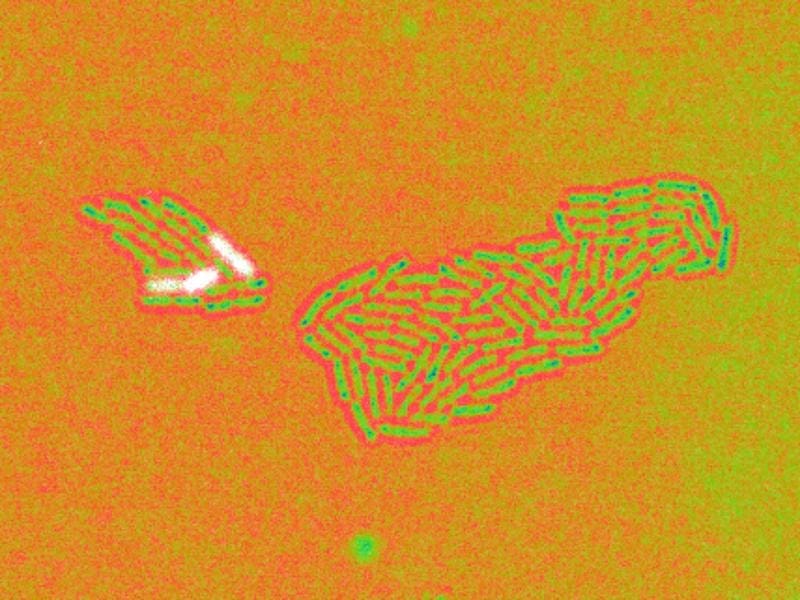Pseudomonas aeruginosa: Helmholtz Center deciphers survival strategy of the hospital germ
The bacterium Pseudomonas aeruginosa, a dreaded hospital germ, has a clever trick for successfully establishing infections in the human body. An international research team led by the Helmholtz Centre for Infection Research (HZI) has now discovered that the pathogen uses epigenetic mechanisms to form different subpopulations – even within genetically identical bacteria. This discovery, published in the journal Proceedings of the National Academy of Sciences (PNAS), could open up new ways of combating the often multi-resistant pathogen.
Pseudomonas aeruginosa is a true survivor. The pathogen, which thrives in soil, water and on damp surfaces, also feels at home in the human body – especially when the immune system is weakened. It is notorious in hospitals as it can cause wound infections, chronic lung infections and blood poisoning. Its growing resistance to antibiotics makes it a global threat. “Our results show that P. aeruginosa specifically relies on diversity – and can thus adapt to changing conditions in the human body,” explains Professor Susanne H├żu├¤ler, head of the study and the Department of Molecular Bacteriology at the HZI and TWINCORE in Hanover.

The research team discovered that the pathogen develops different functional roles within a genetically identical population, as if it were not a single germ but many different ones. The key lies in an “epigenetic memory” that controls the activity of certain genes across generations. The gene glpD, which encodes an enzyme for glycerol metabolism, was particularly striking. “We found that glpD is expressed surprisingly variably in a pure bacterial culture,” says Dr. Nicolas Oswaldo Trinler, a scientist in H├żu├¤ler’s team. Using genetic engineering methods, the researchers were able to demonstrate an ON/OFF behavior of this gene: While some bacteria strongly activate the gene, it remains inactive in most of them.
This variability is no coincidence, but a strategic division of labor. Bacteria with active glpD expression produce more toxins, are more mobile and can attack immune cells more effectively. Those with low expression, on the other hand, act more inconspicuously, which could help them to hide from the immune system. “This diversity within a clonal population is not a weakness, but a clever survival strategy,” emphasizes Trinler. It enables the pathogen to attack and protect itself at the same time, which strengthens its ability to establish infections.
Using state-of-the-art single-cell analysis, live microscopy and mathematical modeling, the team showed that this diversity can arise from just a few bacteria – for example, when pathogens enter the body through a wound or when inhaled. The findings explain why P. aeruginosa infections are so difficult to treat: Traditional antibiotics and the immune system are often unable to combat all subpopulations at the same time.
The study opens up new perspectives for drug development. “Epigenetic mechanisms such as the one discovered here could provide targeted starting points for blocking the pathogen’s ability to adapt,” says H├żu├¤ler. Future therapies could aim to prevent the bacterium’s ability to form such functional subpopulations. This could be an important step towards defusing one of the most dangerous hospital germs.
Original Paper:
Elisabeth Vatareck*, Tim Rick*, Nicolas Oswaldo GomezŌüĢ, Arnab Bandyopadhyay*, Janina Kramer, Dmytro Strunin, Jelena Erdmann, Oliver Hartmann, Kathrin Alpers, Christian Boedeker, Anika Steffen, Christian Sieben, Gang Zhao, J├╝rgen Tomasch, Susanne H├żussler. Epigenetic cellular memory in Pseudomonas aeruginosa generates phenotypic variation in response to host environments. Proceedings of the National Academy of Sciences, 2025. DOI: 10.1073/pnas.2415345122
*contributed in equal parts
The articles in the news section are produced by X-Press journalist office
Gender note. The personal designations used in this text always refer equally to female, male and diverse persons. Double/triple references and gendered designations are avoided in favor of better readability. t




